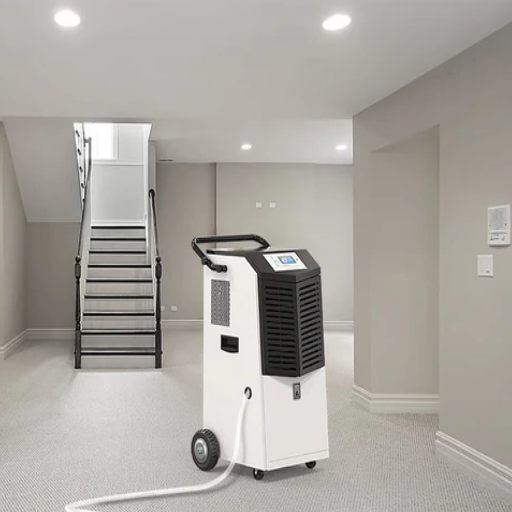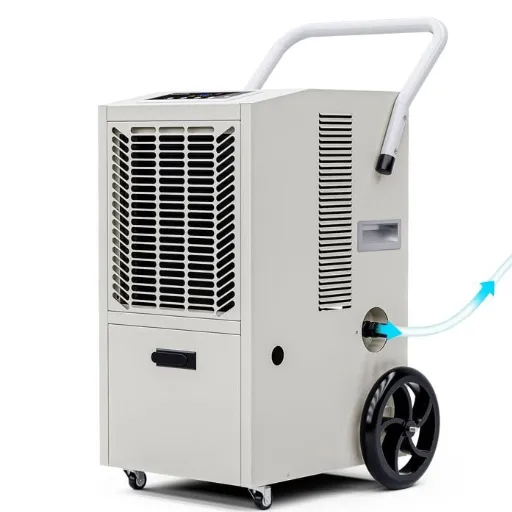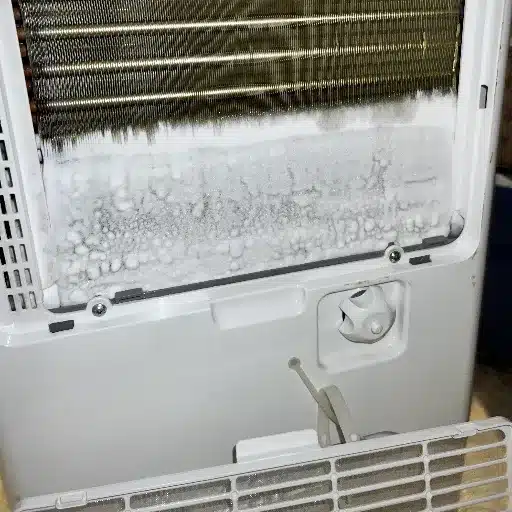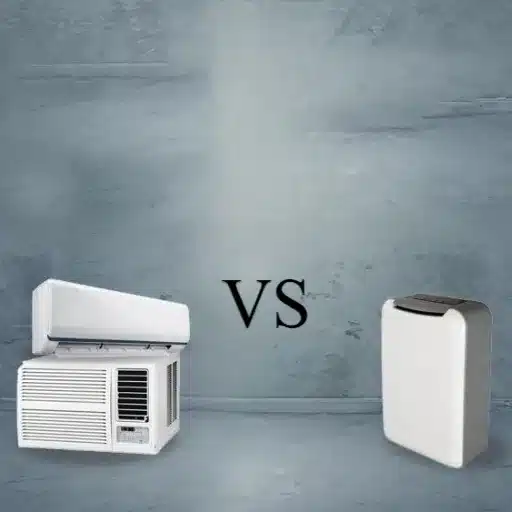Excessive moisture in basements is a common yet serious issue that can lead to structural damage, mold growth, and reduced air quality. For homeowners and businesses alike, finding a reliable solution to maintain proper humidity levels is critical to preserving the integrity of the space and ensuring a safe environment. This article aims to guide you through the process of selecting the most effective industrial dehumidifier for your basement. By understanding key factors such as capacity, energy efficiency, and specific features, you’ll be equipped with the knowledge to make an informed decision that meets your unique needs.
How Does an Industrial Dehumidifier Work in a Basement?
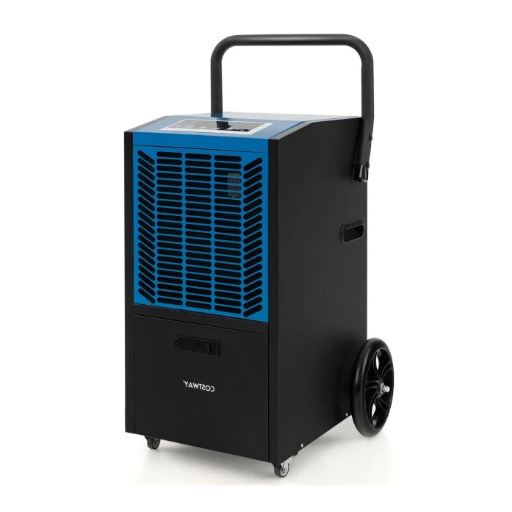
Understanding Humidity Levels and Its Impact
A basement experiencing unwanted moisture can create problems such as mold, structural deterioration, and poor indoor air quality. Basement humidity is chiefly a result of unnatural air conditions due to being situated below the ground, with unknown or low ventilation and groundwater beneath. When relative humidity levels surpass 50, conditions become ideal for moisture-related nasties to occur.
The industrial dehumidifier reduces the excessive moisture in the air and maintains the relative humidity within the optimum range of 30-50%. It draws highly humid air and passes it on cooling coils, where moisture condenses into water and gets collected or is drained out. This keeps the area dry to prevent mold-breeding and mildew growth, thereby secondary to safeguarding against moisture-related damage to construction materials and furnishings. These industrial units have the prestige of being able to effectively treat larger areas than residential units and handle higher intensities of humidity.
The downside is that even when the moisture is contained in the basement, however well or badly, making the right household air by itself is not just the preservation of the structure. Due to reduced humidity levels, air quality is enhanced, allergens are reduced, and a healthy living atmosphere is established. Furthermore, destruction to wood, corrosion of metallic components, along with weakening of the concrete basement, is hindered, while wishing for more assistance in the time-tested foundation of a well-preserved basement. In any residential or commercial setting, it is crucial to understand and control humidity levels while utilizing effective equipment.
How Dehumidifiers Reduce Moisture Effectively
The function of a dehumidifier is to abate or reduce moisture by taking out excess water vapour from the air and keeping the indoor humidity level optimum. A loud, buzzing fan draws in moist air, which flows over cold coils where the water vapor materializes into liquid. This water is channeled outside or stored in a container; meanwhile, drier filtered air is returned into the room. The process works only well within a relative humidity range of 30-50%, which helps stop mold from growing and allergens such as dust mites from thriving.
Energy-efficient dehumidifiers with settings that can be adjusted accommodate different moisture levels in different environments. High-capacity units, for instance, work well in basements, whereas small models suit smaller areas such as bedrooms or bathrooms. Some advanced dehumidifiers have built-in hygrometers that measure humidity levels in real time and automatically modulate the performance of the dehumidifier to keep moisture control consistent.
Properly handled dehumidifiers maintain the whole structure and comfort of an indoor area. By reducing dampness, they also reduce the slow and gradual erosion of wood, drywall, and other moisture-sensitive materials. They further contribute to healthier air conditions by removing respiratory allergens and odors typical of high humidity. However, to get the best outcome, one should pick a dehumidifier based on its capacity, placement, and maintenance schedule.
Preventing Mold and Rot in Damp Areas
Mold and rot are common reasons for prolonged moisture in indoor places and can pose serious threats if allowed to damage the infrastructure. Mold develops in areas where water remains for long wet periods, usually above 60% humidity, posing hazards for health through respiratory issues, allergies, and other diseases. Rot affects wooden structures, where it gradually breaks down the wood and can, in time, render it unstable from a structural perspective. Prevention can best be achieved with humidity maintained consistently below 50% and with regular airing to keep mold spores from settling and wood from absorbing extra moisture.
More strategically rendered dehumidification works best to keep such risks under control since it manages the moisture content in the air. Viewed under that lens, desiccant dehumidifiers are efficient, especially in environments where low temperatures prevail, as they use absorbent materials. Meanwhile, refrigerant dehumidifiers are best suited for relatively warm conditions and spaces with high humidity. The selection of any appliance should depend mainly on the area size and temperature range, as well as the pint rating of a dehumidifier, which measures how much water it can extract within a single day. Keeping the device pieces up to par by cleaning their air filters and drainage systems would ensure the long-term operating efficiency of these appliances and fulfill their protective promise against any dampness calamity.
Complementary steps include improving thermal insulation, repairing minor cracks on walls, roofs, floors, and interiors, and installing vapor barriers in relevant areas. Proper insulation prevents condensation, particularly on cold surfaces, while vapor barriers serve to restrict the movement of ground moisture into building structures, mostly in basements and crawl spaces. Initiating scheduled inspections of the most vulnerable locations, such as bathrooms, kitchens, and attics, supports moisture-related problem detection at an early stage and timely remediation. In this way, property owners and managers will keep their premises free of contaminants while ensuring the further integrity of their structures.
What Features Should You Look for in the Best Industrial Dehumidifiers?
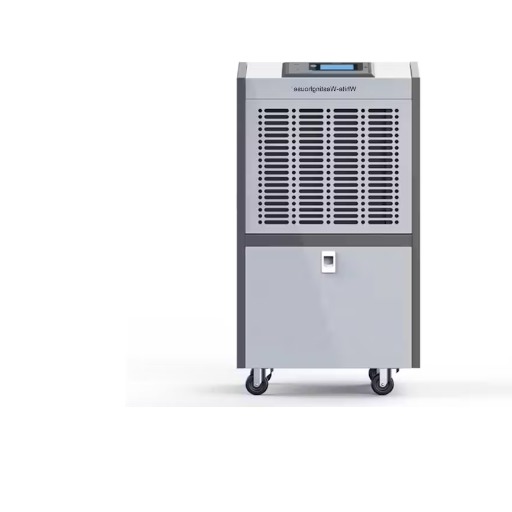
Importance of a Condensate Pump in Industrial Settings
A condensate pump is an important in the industrial dehumidification systems to carry away the water collected from the dehumidifier automatically. Its importance becomes evident in those environments where a gravity drain is hard to put into effect or inefficient because of the location of the unit or the requirements arising from a large operation. Condensate pumps help in continuous operation by stopping overflow from the water tank, thus minimizing downtime and increasing productivity.
They are high-capacity pumps that cater to industrial applications and therefore must handle large volumes of moisture being extracted from the air. Many pumps today incorporate different features of the likes as thermal protection against overheating, efficient motors for energy conservation, and materials that can withstand stringent industrial conditions. In addition, industrial condensate pumps are built to handle vertical lifts of often several tens of feet, making them essential where the dehumidifier has to discharge water over long distances or to a drain at an elevated altitude.
A dehumidifier with a reliable condensate pump goes far in ensuring operational efficiency, especially within the realms of manufacturing, food processing, and storage maintenance, where controlled humidity levels hold great importance. This serves to keep one within industry regulations, keeping the inventory or machinery protected from excess moisture, and strengthening a safer and efficient working environment in the long run.
Choosing the Right Capacity: From 70 Pint to Larger
Determination of a dehumidifier is made along the capacity of the area size and the level of humidity to be controlled. A 70-pint dehumidifier will suffice for medium, large spaces, and moderate moisture problems, such as areas like basements, storage areas, or general places of about 2,500-4,000 square feet. Nevertheless, bigger commercial or industrial units of more than 100 pints are often required to optimally perform under highly moist conditions.
Ambient room temperature, baseline humidity levels, and whether there are additional moisture sources (such as steam or water leakage) become the criteria for consideration when working out the capacity. A unit or multiple units of amplified capacity may arise to avert large mold build-ups or damage to structures and failure of minimum regulatory terms if the places are subjected to constant or heavy humidity. Situations regarding food processing are good examples.
Being sensor-controlled, each of the newer models monitors automatic adjustment of capacity under real-time conditions to promote energy saving and lessen operational supervision. With investments in high-capacity or scalable units, environmental consistency is assured alongside meeting industry standards of air quality and safety.
Ensuring Reliability and Performance for Continuous Use
Given the requirement to maintain reliability and performance in continuous operation facilities, advanced systems must harbor robust designs and fail-safe provisions. Said systems contain redundancies in such critical parts as dual power supplies, spare sensors, and automated diagnostics; those redundancies ensure that the systems continue to function even under arduous conditions. Moreover, dynamic load-balancing systems distribute workloads among various components, thus impeding any possible bottleneck or overheating scenario that could degrade performance.
Predictive maintenance algorithms ensure the extended life of the equipment, given that wear and tear are identified and dealt with from a data-driven perspective before the equipment fails. Vibration analysis and thermal imaging, for instance, can uncover abnormalities within any motor or compressor, enabling one to take remedial action ahead of time. This will significantly minimize unplanned downtime while simultaneously enhancing net system efficiency.
Another factor that independently guarantees reliable operation is compliance with international standards, such as ISO 9001 concerning quality management systems, or ISO 14001 relating to environmental responsibility. The other scalabilities of the systems lend itself to smooth operation even with minimal human intervention.
Is a Commercial Dehumidifier with Pump Suitable for Home Basements?
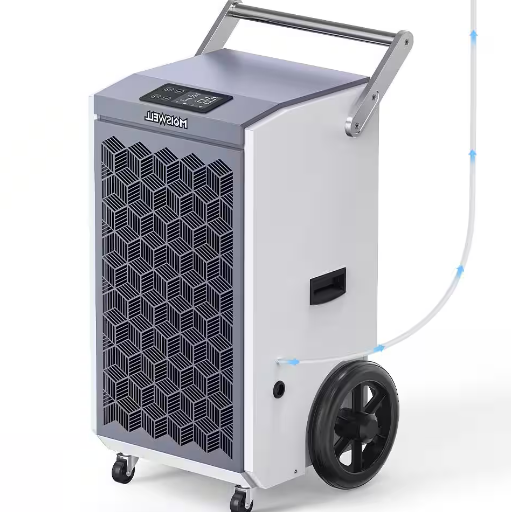
Comparing Home Units to Commercial Dehumidifiers
Residential dehumidifiers are small, quieter, and suitable for small spaces, whereas commercial dehumidifiers are huge, rigid, and capable of high-capacity moisture removal in large or industrial areas.
|
Aspect |
Home Units |
Commercial Units |
|---|---|---|
|
Moisture |
30-70 pints/day |
70-200+ pints/day |
|
Dimensions |
Compact |
Large |
|
Build |
Lightweight |
Heavy-duty |
|
Sound |
Quiet |
Louder |
|
Power |
Low |
Higher |
|
Controls |
Basic |
Advanced |
|
Mobility |
Easy to move |
Limited mobility |
|
Price |
$150-$600 |
$1,500-$3,500 |
|
Application |
Homes, small spaces |
Warehouses, factories |
When to Consider Larger Industrial Dehumidifiers for Your Basement
An industrial dehumidifier in a basement is a must whenever extreme moisture control is needed, and where the residential-type unit is not sufficient. An industrial-grade unit can satisfactorily remedy a basement that has high humidity levels frequently above 70% or is persistently experiencing water intrusion. These units have been designed to get rid of very high quantities of moisture, aiding in the prevention of ills like mold, mildew, or structural damage instead of just dealing with a few drops of moisture here and there- namely, they take away more than 200 pints per day.
If your basement serves as a storage space for materials, equipment, or inventory that may be sensitive to humidity, industrial dehumidifiers are indispensable. Also, if your basement is large, like above 1,000 square feet, or has poor air circulation that unevenly distributes moisture, the power and capacity of industrial units are the apt solution. They find their use in houses in flood-prone areas or even undergoing post-flood restoration, where a speedy and steady moisture removal is required to avoid further damage.
These units, being bulkier and demanding higher up-front costs, generally pay for themselves in long-term reliability due to their advanced control, sturdiness, and capacity. If you intend to invest in one of these, ensure that proper ventilation is possible and that your electrical setup can cater to their relatively vast power requirements.
Installation and Maintenance Tips for Optimal Performance
Improper installation and maintenance make up a major factor that reduces the life and efficiency of such advanced systems. During installation, nothing must be left to chance in following the manufacturer’s exact specifications and requirements. Examples of such conditions include installation in a location that is well ventilated and free from obstacles from block free airflow. One should still require a thorough assessment of the electrical supply in terms of voltage and circuit capacity to ascertain that such a supply meets the power requirements of the unit to prevent the inefficiency of equipment in its operation or the occurrence of an electrical fault. Mounting procedures should additionally consider means of vibration isolation to diminish structural wear and potential noise issues.
For maintenance, periodical checking must be carried out on major points such as air filters, condenser coils, and the drainage system. Air filters should be cleaned or replaced in accordance with the manufacturer’s specifications, preventing any accumulation of dust that could obstruct airflow and lead to overheating. The condenser coils should be clear of any debris, as it decreases heat exchange efficiency and thereby leads to increased energy consumption. To that end, check the drainage system for possible obstruction because it may cause an adverse effect of water pooling with potential for mold growth or internal damage. Periodical inspection of the electrical connections, followed by tightening and corrosion prevention, will seal such forces that could reduce the system’s performance.
Moreover, these advanced systems can be equipped with diagnostic tools and sensors. Comprehensive servicing annually by qualified technicians would cover deep cleaning, checks on components, and recalibrations, all of which will contribute to the longevity of the unit and good performance of the system. These measures, taken with installation and maintenance instructions, will secure your system attaining reliability and efficiency over time.
How to Find the Best Industrial Dehumidifier for Your Basement?
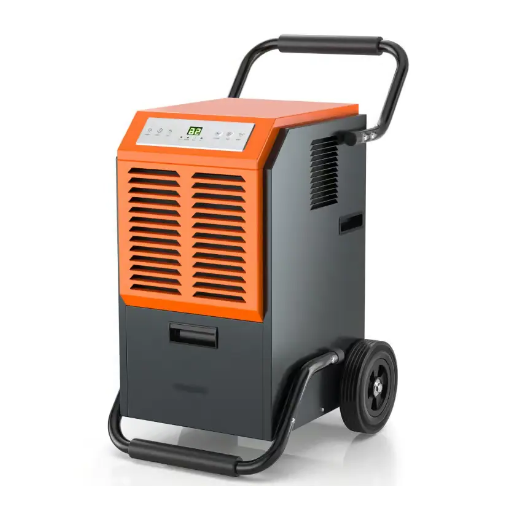
Considering the Cost and Value of Industrial Models
At the outset, initial purchase cost and long-term operational considerations are at stake once industrial dehumidifiers are under consideration for basement applications. Industrial types usually have been made for moisture removal in huge capacities, bearing in mind an industrial robustness and durability that might lack in standard residential units. The purchase price stands as a reflection of this capability price that includes features such as enhanced airflow rates, energy-efficient compressors, and water extraction capacities. But do not let the upfront cost be the deciding factor—operational efficiency, maintenance requirements, and durability must also enter the judgment to consider real value for an investment.
Energy consumption factors into the general worth or valuation of industrial dehumidifiers. To check efficiency, consider the EER (Energy Efficiency Ratio) rating of the unit or the annual electrical energy consumption estimation. Many models are embedded with energy-saving features such as sensors that detect humidity levels and consequently shut down the system, or programmable control systems that optimize power usage, shutting down the system when satisfactory humidity levels are met. This really means that, over the years, any model with energy-saving features pays for itself, despite such models commonly being more expensive to purchase initially. Another limitation is that maintenance, periodic servicing, and upkeep (e.g., filter replacements) shall be considered as such expenses will impact the cost-saving potential of the model.
The other criteria to be considered for ascertaining the total value of industrial dehumidifiers are durability and warranty coverage. Under continuous or long-term operation in an aggressive basement environment contaminated with moisture, and probably even mold spores, industrial units will be challenged to greater wear and tear. Top-line models using corrosion-resistant materials and heavy-duty components are believed to be guaranteed for extended service in aggressive conditions. Further, warranties covering not only major components but also labor considerably support the unit since they reduce total repair expenses. Thorough consideration of these issues will bring in the big picture of cost-to-value basis, giving way to an educated decision for the apt industrial dehumidifier for long-term use.
Selecting a System that Fits Your Basement’s Size and Needs
Several key parameters need to be considered so the dehumidification system performs optimally for your basement. First, consider the square footage of the basement because it directly impacts capacity. Dehumidifiers are rated based on how much moisture they take out in a day under standard conditions. For example, a basement between 1,000 and 1,500 square feet is commonly looked upon as one that will require a system with a capacity ranging between 30 and 50 pints per day. Yet the ambient humidity rates also need to be taken into consideration. If the humidity is consistently above 60 percent relative humidity, opting for a higher-capacity unit, or one with cut-in humidity sensors, would certainly give you better reliability and control. Also, consider the Energy Efficiency Ratio (EER) of the system being purchased, which affects energy costs of operation and sustainability in the longer term. Typically, an advanced system either bearing or applying for Energy Star certification is what brings together the best in performance and energy savings.
With the trend going towards multi-functioning dehumidifiers nowadays, they use smart sensors, auto-defrost functions, and incentive parameters to optimize system operations for specific environmental conditions. Having units with Wi-Fi connectivity or app-controlled interfaces can provide ease of monitoring and maintenance.
Consider the intricacies of the layout, such as oddly shaped rooms or obstructions to airflow. A unit equipped with advanced airflow distribution may compensate for these issues via multiple fan speeds or directional vents. Marrying this data-driven approach with precise product specifications ensures a solution that is effective and efficient in maintaining a healthy and moisture-free basement environment in the long term.
What are the Benefits of Using an Industrial Dehumidifier in Basements?
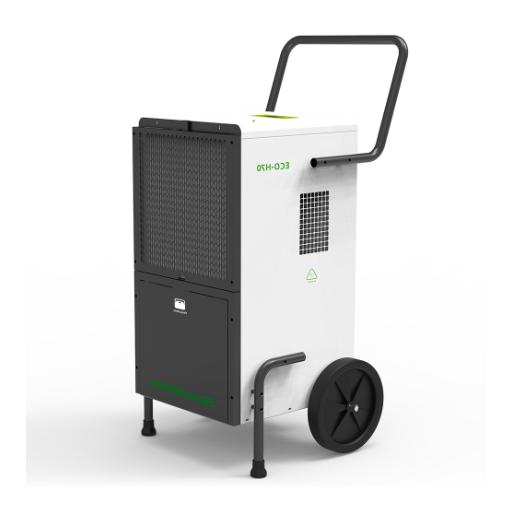
Preventing Costly Repairs Due to Water Damage
Basements mostly undergo water damage because of persistent moisture that deteriorates building materials like wood, drywall, and insulation. Such deterioration over the years might lead to massive maintenance costs and might even start compromising the structural integrity of the house. According to trade research studies, untreated water damage is the leading cause of foundation failure, the repair of which may cost anywhere from $2,000 to $25,000, depending on severity and geography.
This solution takes a step before water damage formation, preventing moisture accumulation over wet surfaces. Top-rate dryers with very high moisture extraction levels can lower the relative humidity to the desired levels between 30 and 50%, as recommended by the EPA. Because of the control of this best range of humidity, dehumidifiers help prevent the formation of nasty mold and mildew and help protect the kind of assets that are up on furniture, stored items, and electronic equipment-folks generally keep in their basements.
Also, with state-of-the-art sensors and automation technologies, constant monitoring of relative humidity can be ensured for continuous and best operations suited to changing environmental conditions. This kind of operation minimizes wear and tear on the dehumidifier while saving the basement from water damage in the long run, mainly contributing to huge savings on repairs and long-term maintenance.
Improving Air Quality by Reducing Musty Odors
The real culprit of basement musty odor and confined smells is excessive moisture buildup, with limited places for ventilation and prosid-ing and mold and mildew types of microorganisms ensconced. Apart from actually being an uncomfortable odor, they can worsen indoor air quality, thereby posing health hazards arising from allergies, respiratory issues, and other sensitivities. Advanced dehumidification systems would be key to this issue through effective ambient moisture control. They maintain relative humidity below the 60% mark and thus do not allow a conducive environment for microbial growth to set in, and subsequently, they eliminate the sources of musty odors.
Dehumidifying air is not the sole way to improve air purity, since air filtration actively traps airborne particulates such as spores, dust, and VOCs. HEPA air filters have gone mainstream as the best defense against airborne particulates that make interior air toxic. Modern dehumidifiers further kill germs and fungi at the molecular level with ionization or UV-C light technologies, a big plus for stubborn odors and clean air needs.
In-depth studies have shown that poor air quality aggravated by musty odors for a long duration can lead to “Sick Building Syndrome” and worsen immune system efficiency. Continuous monitoring based on smart humidity sensors, air-quality meters, and meter-maintained adjustment of real-time ensures systems in peak-mode efficiency. That is synergy for sustainable and energy-saving air purification practice-interior design, culture, and environment.
Maintaining a Healthy Environment by Controlling Moisture
Moisture control plays an important role in ensuring a healthy and sustainable environment inside. High humidity levels above 60% facilitate mold, mildew, and harmful microorganisms to grow on the structure, directly degrading indoor air quality. Modern methodology uses real-time data generated by IoT-enabled humidity sensors, recording and broadcasting minor or major fluctuations with high precision. These devices, in conjunction with centralized air quality management systems, instruct the HVAC systems through predictive algorithms to achieve the best balance between temperature and humidity for indoor comfort.
Keeping interior relative humidity between 30% and 50% not only eliminates or greatly decreases amounts of allergens, thanks to plants with studies, but also prevents structural damage to buildings. For example, desiccant dehumidification technologies that utilize a hygroscopic material for moisture removal are gaining popularity in energy-efficient applications. Using such systems, one could maintain an indoor air quality standard as defined by ASHRAE (62.1-2019) without incurring an unnecessary energy penalty.
An accurate moisture-control method together with fine filtration, continuous control of vapor, and automated ventilation solutions, helps promote healthy interiors that are inspiringly comfortable. Building designers and facility managers build an efficient energy-holding air quality promise for further enhancement by interlacing technical innovation with environmental data.
References
-
Analysis of Desiccant Dehumidification for use in The Waverly on Lake Eola – A detailed study from Penn State University on desiccant dehumidification systems.
-
Heating, ventilation, and air conditioning for a superinsulated solar house – University of Illinois research discussing HVAC and dehumidification in residential settings, including basements.
-
Summary of commercial conservation programs, environmental issues, and program consistency – A report from the U.S. Department of Energy on environmental considerations, including basement moisture control.
Frequently Asked Questions (FAQ)
Q: What factors should I consider when choosing a product for basement dehumidification?
A: When selecting a dehumidifier for your basement, consider factors such as the size of the area, the humidity level, energy efficiency, and whether you need a hose for continuous drainage. Additionally, look for good dehumidifiers that are reliable and have positive reviews.
Q: How do I determine the right size of a dehumidifier for my basement?
A: To choose the appropriate size, measure the square footage of your basement and consider the humidity level. Larger basements or those with high moisture levels may require more powerful units. A good dehumidifier should be able to handle these needs efficiently.
Q: Is a hose necessary for a basement dehumidifier?
A: A hose for basements is not mandatory, but it allows for continuous drainage, eliminating the need to empty a bucket frequently. This feature is especially useful if your basement experiences high humidity regularly.
Q: Can I shop for dehumidifiers online, and what should I look for?
A: Yes, you can shop for dehumidifiers online. Look for features such as energy efficiency, water tank capacity, hose compatibility, and customer reviews to ensure you are purchasing a good dehumidifier that meets your needs.
Q: How quickly should a dehumidifier reduce the moisture in my basement?
A: A good dehumidifier should quickly start reducing humidity levels within a few hours. However, the time it takes to reach optimal levels depends on the size of the unit, the humidity level, and the size of the basement.
Q: What maintenance is required for a basement dehumidifier?
A: Regular maintenance includes cleaning the filter, checking the hose for leaks or clogs, and ensuring the bucket is emptied if not using continuous drainage. This will help keep the dehumidifier running efficiently and fix minor issues before they become major problems.
Q: How can I integrate a dehumidifier with a sump pump system?
A: To integrate with a sump pump, use a hose for basements that directs the water from the dehumidifier to the sump pit. This setup allows for automatic drainage and can help manage excessive water accumulation efficiently.
Q: What should I do if my dehumidifier stops working properly?
A: First, check for common issues such as a full bucket, clogged hose, or dirty filter. If these are not the problem, consult the product manual for troubleshooting tips or contact customer service for further assistance to fix the issue.

